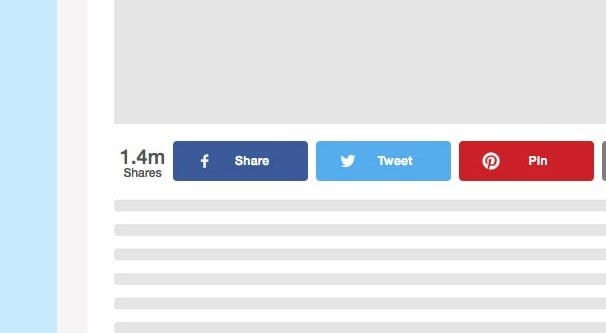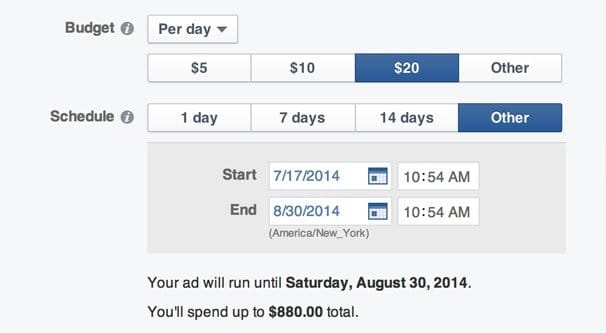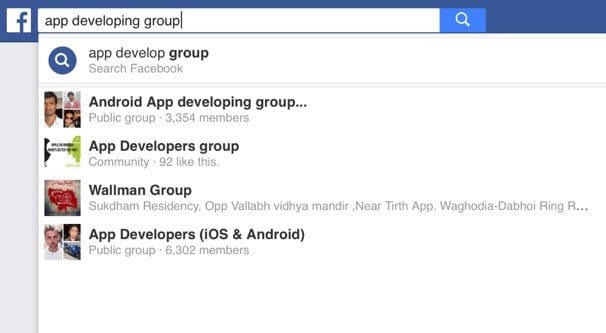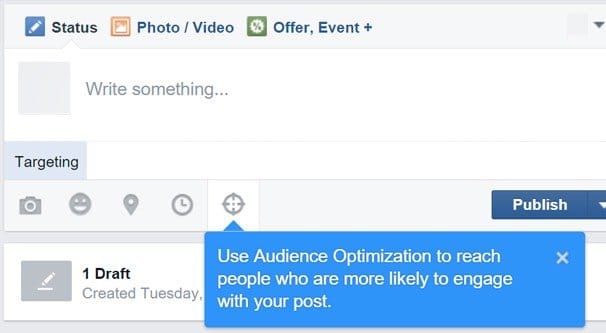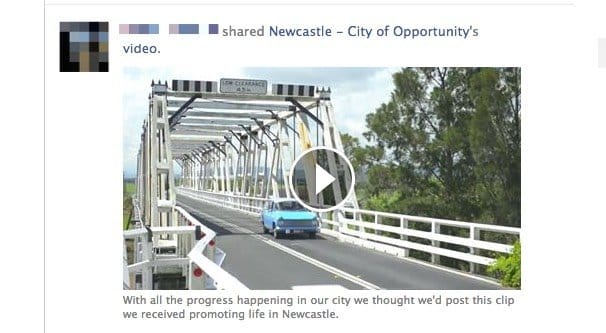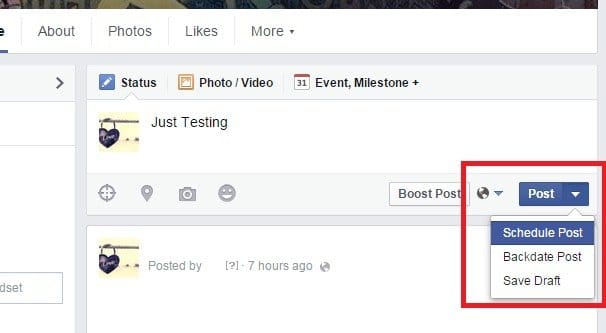 Written by ContentPowered.com
Written by ContentPowered.com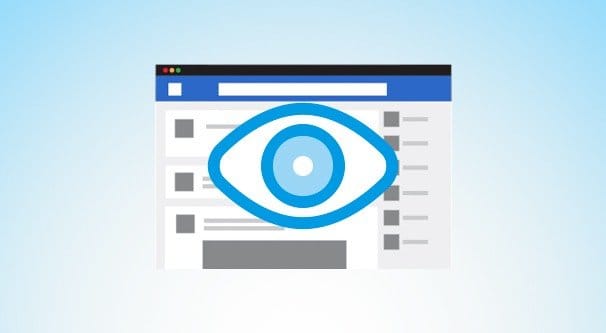
Reach is an interesting metric on Facebook. It’s the number of unique people who see a post your page makes. The individual view is called an impression, but one person seeing a post five times generates five impressions but just one reach.
Reach is divided into three categories; organic, paid, and total. There used to be another type of reach, called viral reach, but Facebook has stopped differentiating it from organic reach. These days, organic reach is the sum total of all the people who have seen a post through non-paid means, like friend shares or just normal display. Paid reach is all the people who have seen your post through paid advertising. Total reach is the total number of people who have seen your posts all combined.
It’s worth noting that you cannot simply add organic and paid reach together to get total reach. If someone sees your post organically and sees it through an ad, they are added to both organic and paid reach, but only count for one reach in total reach. Therefore, your total reach will often be lower than the sum of your organic and paid reach figures.
Additionally, if a person visits your Facebook page and sees six different posts, they will be added to the organic reach for each of those posts, but only counted once for total reach. Total reach is a measurement of the number of people who see something you post, not on a per-post basis.
If you want to increase your reach, you need to increase the number of people who see your content. You might think the way to do that is to increase the size of your audience, but that only works up to a point. Studies have shown that the biggest brands, those with over half a million followers, have some of the lowest reach numbers in the business, generally under 2%.
Of course, 2% of half a million is still a lot more than 6% of 1,000, so it’s always a good idea to get more followers simply for the volume. It’s just a better idea to focus on the slower growth of high quality followers, rather than the fast growth of terrible followers.
Here are ten techniques you can use to boost your reach, both on individual posts and on your page overall.
1. Optimize Your Content for Sharing
Remember a few years ago, when every single post on Facebook had a stinger with the “you won’t believe what happens next!” line tagged on? That kind of clickbait was meant almost solely to improve reach, and it did a great job because it got a lot of people clicking on content that was essentially valueless. Facebook has since banned that technique, but it’s still in use, from some pages that simply don’t care and from others that skirt the line.
In any case, you need to make your content as interesting and as easily shared as possible. You want everyone who sees it to say “this is cool, I should show X this!” Generally, this can be improved with colorful and vibrant images, videos, and short, easily-digestible content.
When you’re aiming for reach, drop the call to action. You’ll get more sharing when people don’t feel like they’re spreading an ad to their friends. Generally, you only want one promotional post with a marketing CTA per every 5-7 other posts.
2. Spend Money on Advertising
Buzzfeed essentially was formed around Facebook clickbait and exploded in popularity over the last half a dozen years. They now get a ton of traffic and a huge amount of benefit from Facebook. The way they do that is by spending literal millions of dollars on Facebook ads.
You, obviously, won’t have millions of dollars at your disposal for spending on Facebook ads. You need to spend a more reasonable amount of money, which means less returns in a volume model. However, you have the ability to agilely decide what direction to go with your marketing, turn ads on and off at the drop of a hat, and generally react very quickly to your circumstances.
You don’t necessarily need to spend a ton of money to improve your reach. You can run ads that have views as a goal, and they’ll probably be pretty cheap. You can also run ads with a goal of website views or conversions, and you’ll get reach for free. This is because Facebook only charges for successful objectives; the reach you get while trying to get those objectives is free.
3. Pick the Right Topics
Whenever you create a post, it should have the right kind of topic and perspective for maximum sharing potential. Regardless of topic, you need to approach it from a specific angle. It can be:
- Valuable. These kinds of posts are made to bring some kind of value to the user. Posts about sales and deals kind of work, but you really need something that includes tangible value, like a contest or a tutorial.
- Educational. These kinds of posts are made to teach something to your audience. It could be a fascinating fact or a behind-the-scenes view of your company or something they’re interested in.
- Entertaining. These kinds of posts are made to make people laugh, cry, sympathize, or otherwise experience some kind of moderately positive emotion. When they fall in tune with your emotional message, they’ll be more likely to share.
With the right kind of post, you can get a lot more interest on a boring subject than someone else can get on an interesting one.
4. Post Evergreen Content
Evergreen content is the opposite of timely content. Facebook seems like it works best with timely content; a newsworthy item is heavily promoted for a few hours as people share it around constantly. By contrast, evergreen content doesn’t get as much value. So why should you use it?
Timely content only lasts as long as the topic is still valuable, generally only half a day or a day. The next day, it’s old news, and people don’t care so much about it. Evergreen content, however, is content that might be valuable no matter when it’s shared around. A good explanation of the rules of Football for beginners might not get a lot of initial attention, but as long as people are new to the sport, the article will remain valuable.
This is how a single post can continue to rack up reach for both itself and for your page as a whole for months after it has been published. You can even encourage it along by re-sharing it later or pinning it to the top of your timeline when you want to get a little more exposure.
5. Basic Engagement
You need to keep up the engagement rates for your audience, so they feel more invested in your brand. This is what keeps them coming back to add reach to future posts, and it’s what helps them feel confident in sharing your posts with their friends. You add value by adding comments and replies to people who have something to say.
This is also why you don’t want to dive head-first into automating everything you want to say. Sophisticated chat bots exist for messenger, but for organic posting on comments, you need a human touch.
This is the basic level of engagement you should include for just about every post. However, there are more advanced types of engagement you can use for your posts to keep your best players around.
6. Advanced Engagement
An idea suggested by Neil Patel is to create a special closed Facebook Group that only you and people you invite can see. You can create this to be a special community of your staff, your brand ambassadors, and other top-tier followers.
What you do is create this group and keep an idea of the people who follow you and who tends to always comment and offer constructive criticism. These people are great to have around; they keep you honest and they recommend you to others.
At the same time, you can use this special closed group for a kind of influencer marketing. Convince people there’s value to be found inside, then make them feel like it’s an honor to be chosen to join the group.
Invite people who comment with high quality content, and make sure you keep up activity inside the group. Share unique information, offer unique opportunities, and make sure people know that it’s something special they can communicate with rather than just a fan-to-fan gimmick.
7. Use Organic Targeting
If you’ve run Facebook ads before, you’ll have some experience with how robust and varied Facebook targeting happens to be. You have thousands upon thousands of different options you can use to reach specific groups of people. By iterating targeting, you’re able to drill down to specific, highly engaged audiences and reduce the cost of your ads.
Facebook organic posts happen to have targeting options as well. You just need to use them and your posts will be shown to people in your audience who meet the criteria.
This won’t necessarily increase your reach on its own. In fact, by adding more targeting options to organic posts, you might decrease your reach by a hair. The trick is to make sure that your targeting is good. You get higher quality people liking and sharing your content. You also make sure that your best users see your content, when they otherwise might not.
You may have to enable organic targeting before you can use it. To do so, go to your page settings and enable it in the “targeting and privacy for posts” section in the general settings.
8. Publish More Videos
Video production is expensive and time consuming, I know. It can be extremely difficult to get a reasonable number of videos on Facebook. However, if you have GOOD videos, you’ll see the value almost immediately.
Videos can be posted all around the web, but one thing you want to avoid is posting YouTube links on Facebook. Facebook has been trying to compete with YouTube for video hosting. The two sites are neck and neck, each working better than the other in some arenas.
Instead, post the video directly on Facebook natively. Facebook will promote a video hosted on their own servers more than one from YouTube. That’s not to say you shouldn’t post on YouTube – you absolutely should – just that the Facebook post will be on Facebook directly.
9. Post with Precise Timing
There are two elements of timing you need to pay attention to. One is frequency; how often throughout the day or the week do you post? According to brand studies and surveys, posting 1-3 times per day is ideal for brands. The best reach numbers are for the people who post once per day. You can try out posting more than once per day, but once is generally enough to keep a Facebook page working at peak value.
The second element is what time of day you should post. This will vary from brand to band as well as depending on how many times you post per day.
I can’t give on one appropriate ‘perfect time’ to post, because there are as many different ideal times as there are audiences. Different brands, different people, and different studies all produce their own “best times.” Instead, you need to turn to your Facebook Insights and see when your audience is most engaged. Post a little bit before that so your post is available to be shared, and you’ll be good to go.
10. Iterate and Adapt
Every single one of these options relies on you having the knowledge to study your metrics after you implement any strategy at all. Post at specific times, post specific content, engage with users for different lengths of time after publication. See which adjustments are working and which aren’t, and improve upon your techniques with this knowledge. This iteration is the foundation of all successful marketing.
